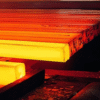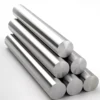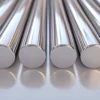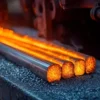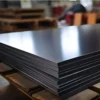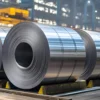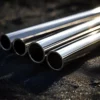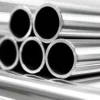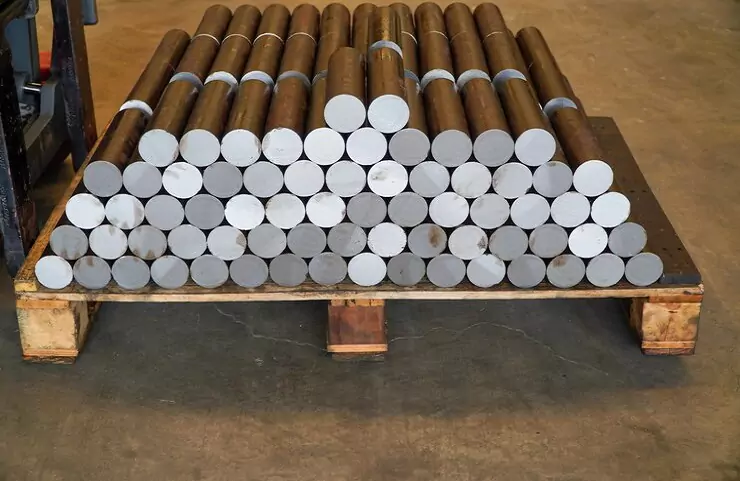Super Duplex Bars
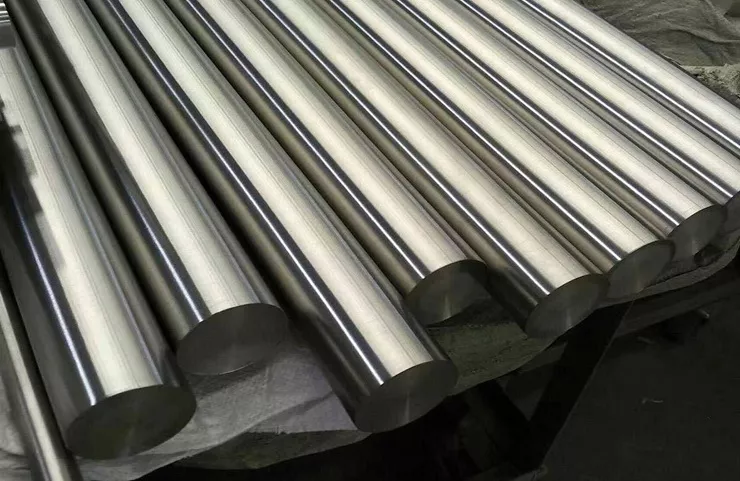
Overview
We have seen the demand for materials that combine strength and corrosion resistance rise steadily across industries. Super duplex bars sit at the intersection of mechanical performance and long-term durability, giving engineers and fabricators a reliable option when standard stainless steels will not last. Our experience at Bhansali Metalloys has taught us that selecting the right alloy early in the project lifecycle prevents costly rework and unscheduled downtime later. We keep a close relationship with reputed mills across India to ensure access to certified super duplex bars that meet stringent project needs. When specifying material, it matters that the supplier understands both metallurgy and field realities. We bring practical knowledge of machining, welding, and handling challenges that often determine in-service performance.
Why Super Duplex Bars Matter
Super duplex stainless steels provide a clear advantage where chloride stress and mechanical loads coexist. These alloys resist pitting, crevice corrosion, and stress corrosion cracking far better than many austenitic grades, making them ideal for seawater and chloride-bearing process streams. From our supply perspective, recommending super duplex is often a life-cycle decision rather than a pure material-cost choice. Higher yield strength allows lighter designs, smaller sections, and reduced fabrication weight while preserving safety margins. Long-term savings come from fewer replacements and lower maintenance frequency, outcomes we have witnessed across petrochemical and desalination projects we support. Selecting super duplex early also simplifies procurement and reduces the risk of retrofit failures. We regularly collaborate with clients on cost comparisons that show total ownership advantages. Our stock policies aim to shorten lead times so that switching to super duplex does not stall schedules.
Metallurgy and Microstructure Essentials
Super duplex steels achieve their properties through a balanced two-phase microstructure of austenite and ferrite with targeted alloying additions. Chromium and molybdenum bolster general and localized corrosion resistance while nitrogen stabilises austenite and enhances pitting resistance. The microstructural balance yields higher strength than austenitic stainless steels without sacrificing toughness at ambient temperatures. Proper solution annealing dissolves harmful precipitates and restores the desirable phase balance after hot working or welding. We monitor chemical composition and heat treatment records closely to ensure material performance matches specifications. Mismanaged thermal cycles can promote sigma phase or chromium nitride precipitation and reduce corrosion resistance and ductility. Our inspection processes include verifying MTCs and discussing heat treatment history with mill partners to avoid surprises in the field.
Mechanical Properties and Performance
Super duplex bars deliver substantially higher yield and tensile strengths compared with commonly used austenitic grades while offering competitive toughness. This superior mechanical profile translates to design efficiencies, especially when weight or section size is constrained. Fatigue resistance in super duplex is often favourable, helping components like shafts and fasteners resist cyclic stresses in demanding conditions. We regularly supply material for applications that require predictable performance under both static and dynamic loads. Mechanical properties must always be validated against mill test certificates, and we ensure those certificates accompany each shipment. For critical components, additional mechanical testing such as impact toughness at specified temperatures can be arranged. Our technical team advises on appropriate acceptance criteria based on end-use conditions to avoid under-specification.
Corrosion Resistance Characteristics
The corrosion resistance of super duplex bars is a result of optimized chromium, molybdenum, and nitrogen levels, which work together to maintain a robust passive film. These alloys resist chloride-induced pitting and crevice corrosion more effectively than many other stainless steels, providing reliability in seawater and chloride-rich process streams. Super duplex steels also show improved resistance to chloride stress corrosion cracking under controlled temperature ranges, which is critical for offshore and chemical processing applications. Surface finish and contamination control significantly affect pitting initiation, so we emphasise proper handling and post-fabrication cleaning. When applications involve sour environments, material selection must consider sulfide stress cracking susceptibility and hydrogen pickup. We coordinate with fabricators to specify post-weld treatments and surface passivation where necessary to preserve corrosion performance.
Forms, Sizes, and Stocking Advantages
Super duplex bars are available in multiple forms including bright round bars, black bars, hexagonal bars, billets, and wire rods that serve different fabrication needs. Bright bars are preferred for precision machining and tight-tolerance components while black bars are used where surface finish is secondary and heavy forging is expected. Hexagonal bars and specially sized rounds support fastener and custom part production. We maintain inventory across a broad diameter range sourced from reputable mills, enabling faster dispatch and flexible cut-to-length options. Stocking multiple mills gives us alternatives if a specific size or heat treatment is needed on short notice. This approach reduces lead time risk and supports urgent maintenance shutdowns. We partner with logistics providers to ensure secure, damage-free transit and timely delivery to project sites.
Fabrication and Welding Best Practices
Fabrication controls significantly influence the in-service success of super duplex components, particularly welding procedures and heat input management. Controlled welding parameters and compatible filler metals preserve the desired austenite-ferrite balance and minimise deleterious phase formation. For critical weldments, post-weld solution annealing is sometimes required to restore corrosion resistance and toughness. Machining super duplex requires sharp tooling and adequate cooling to avoid work hardening and to preserve dimensional integrity. Forming operations should account for higher forming loads and limited cold-formability compared with austenitic grades. Surface cleaning, pickling, and passivation after fabrication remove contaminants and restore passive behaviour. Our technical support includes advising on welding consumables, interpass temperature control, and repair strategies based on fabricator capabilities.
Machining, Surface Finish, and Handling
Machining super duplex bars demands attention to tool geometry, feed rates, and coolant application to manage work-hardening tendencies and extend tool life. We recommend carbide tooling, positive rake angles, and steady feeds for consistent chip formation and surface finish. Bright bars and precision-ground surfaces reduce initiation sites for corrosion, so investing in quality surface finish pays dividends in service life. Handling procedures must avoid contact with carbon steel tools or clamps that could cause surface contamination and subsequent corrosion initiation zones. Packaging for shipment should protect surfaces from moisture and mechanical damage, especially for overseas consignments exposed to saline air. Our warehouse team implements segregation and marking practices to prevent alloy mix-ups and to maintain traceability from stock to shipment.
Selection Guidance from Our Experience
When specifying super duplex bars, start by assessing the operating fluid chemistry, temperature, and mechanical load profile to determine if the alloy benefits outweigh cost premiums. We advise comparing total ownership costs including maintenance, replacement frequency, and downtime risks rather than focusing only on purchase price. For applications with high chloride exposure or elevated mechanical demands, super duplex often proves the most economical choice over the asset life. Early involvement of fabricators and procurement partners helps align welding procedures and inspection plans with material performance expectations. We supply detailed documentation and consultative support so that specification language is precise and actionable. This prevents misinterpretation at tender or fabrication stages and ensures the supplied material performs as intended.

Quality Assurance and Traceability
Quality assurance starts with sourcing from mills that adhere to recognised production and testing protocols and continues through careful inspection at receipt. We provide full mill test certificates for every heat, showing chemical composition, mechanical properties, and heat treatment records that auditors or project inspectors can verify. Additional inspections such as positive material identification, ultrasonic testing, and hardness checks are available on request for critical applications. For public sector projects, we help compile documentation bundles that meet procurement and statutory requirements. Traceability from mill heat to final delivery is fundamental to managing warranty claims and forensics in the unlikely event of in-service issues. Our quality team coordinates with clients and third-party inspectors to ensure acceptance criteria are clear and satisfied.
Handling Storage and Logistic Considerations
Correct handling and storage are essential to preserve the surface integrity and corrosion resistance of super duplex bars. We store alloys in dry, segregated racks to avoid cross-contamination and clearly label each heat to maintain traceability. For overseas shipments, we pack material to protect against salt spray and physical damage with sealed, moisture-resistant packaging. Onsite handling protocols include using non-contaminating slings and avoiding direct contact with carbon steel fixtures. We advise clients to inspect material on receipt for any visual contamination and to keep MTCs accessible for incoming inspections. Timely communication between procurement, logistics, and site teams helps prevent delays and ensures material is staged correctly for fabrication. Our logistics partners are briefed on alloy-specific handling to preserve quality through transit and delivery.
Offshore Applications of Super Duplex Bars
Super duplex stainless steels have become indispensable in offshore oil and gas operations due to their resistance to seawater corrosion and high mechanical loads. We’ve supplied these alloys for subsea manifolds, risers, and structural components where chloride stress corrosion cracking is a major concern. Their high pitting resistance equivalent number (PREN) makes them ideal for submerged environments and aggressive chemical exposure. Engineers often choose super duplex over super austenitic grades to reduce weight and improve lifecycle performance. For a deeper dive into offshore applications and alloy behavior, explore this comprehensive guide on super duplex in oil and gas.
Comparing UNS S32750 and S32760 Grades
While both UNS S32750 and S32760 are classified as super duplex stainless steels, subtle differences in their chemical composition make them suitable for slightly different environments. S32760 contains added tungsten and copper, which enhance its resistance to acidic media and improve impact toughness. S32750, on the other hand, offers slightly higher tensile strength and better pitting resistance in high-temperature chloride environments. We help clients choose between these grades based on service conditions, fabrication plans, and inspection requirements. For a detailed comparison of their properties and applications, refer to this grade comparison of S32750 vs S32760.
Welding Guidelines for Super Duplex Stainless Steel
Welding super duplex bars requires careful control of heat input, filler metal selection, and post-weld treatment to preserve the alloy’s corrosion resistance and mechanical integrity. We advise using low heat input processes like GTAW or pulsed MIG for root passes and matching filler metals with slightly higher nickel content to maintain phase balance. Post-weld solution annealing may be necessary for critical components, especially in sour service or high-pressure systems. Our team supports fabricators with welding procedure specifications and inspection protocols. For technical guidance on welding practices, see this official welding guideline from Industeel.
Super Duplex in Desalination and Water Treatment
Desalination plants and water treatment facilities face relentless exposure to chloride-rich environments, making material selection a critical decision. Super duplex bars offer a reliable solution for components like pump shafts, fasteners, and structural supports that must endure constant contact with aggressive brine. We’ve supplied these alloys for high-pressure zones and rotating equipment where standard stainless steels failed prematurely. Their resistance to pitting and crevice corrosion ensures longer service intervals and fewer shutdowns. In water treatment, super duplex is often used for aeration systems, clarifier mechanisms, and submerged hardware. Our clients appreciate the balance of strength and corrosion resistance, especially when equipment must operate continuously with minimal maintenance. We work closely with plant engineers to match alloy grades with flow chemistry and mechanical demands. This proactive approach helps prevent early wear and supports long-term operational efficiency.
FAQs
Q.1: What forms of super duplex bars do we stock?
Ans. We stock round bars, bright bars, black bars, hexagonal bars, billets, and wire rods in various sizes sourced from reputed mills.
Q.2: Is machining super duplex difficult?
Ans. It requires sharp tools, rigid setups, and proper cooling, but with the right approach, precision machining is achievable.
Q.3: Can super duplex be used in sour service environments?
Ans. Yes, with proper grade selection and fabrication controls, super duplex performs well in environments containing hydrogen sulphide.
Conclusion
At Bhansali Metalloys, we believe that choosing the right material is more than a technical decision, it’s a commitment to performance, reliability, and long-term value. Super duplex bars offer a rare combination of high strength and exceptional corrosion resistance, making them indispensable in industries where failure is not an option. We’ve seen firsthand how these alloys outperform standard grades in offshore, chemical, and water treatment environments, reducing maintenance cycles and extending service life.
To explore our product range, request mill test certificates, or speak with our technical team, visit bhansalimetalloys.com or call us directly at 022-67436541. Let’s build with materials that last. Let’s build with purpose.

